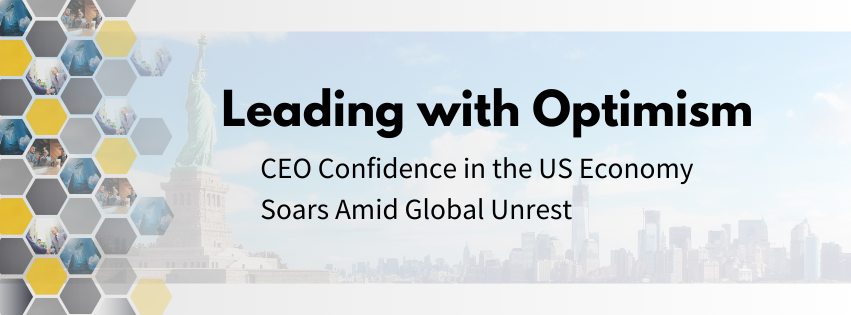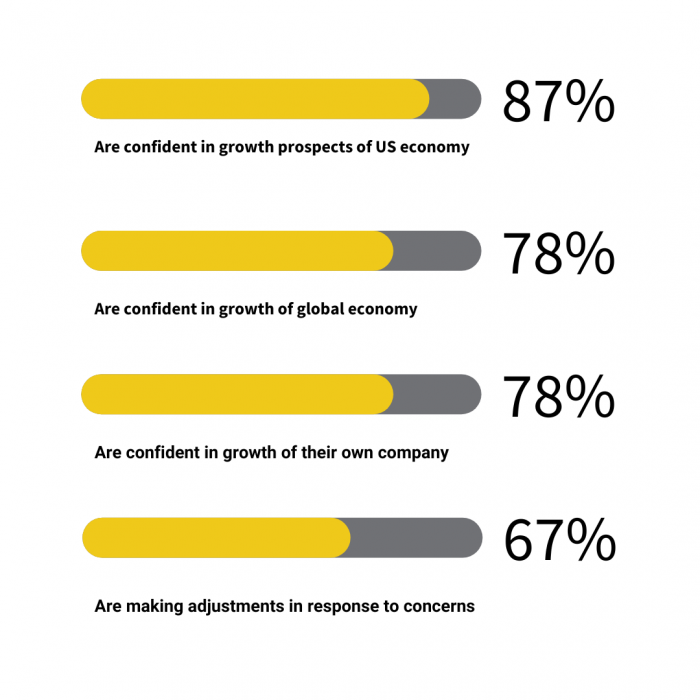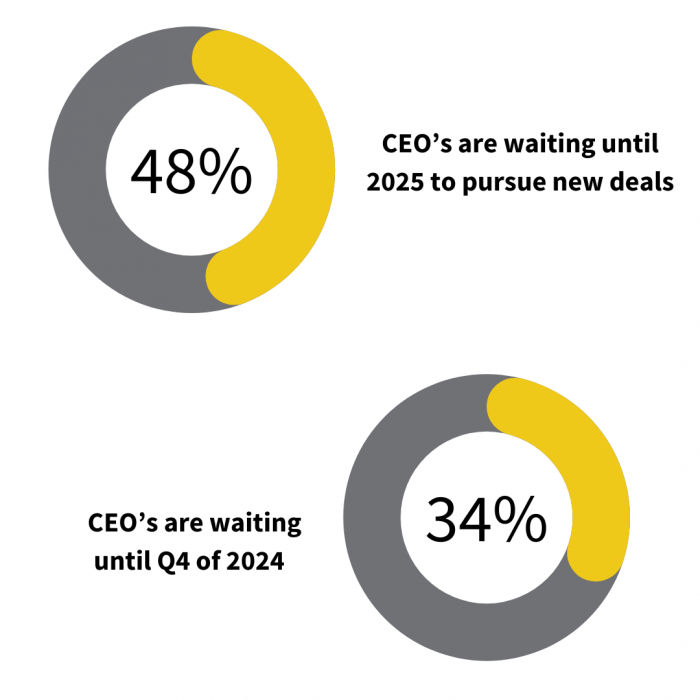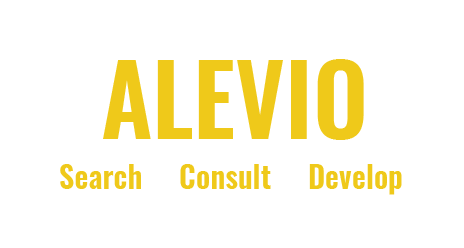
As we move further into 2024, the confidence of CEOs in the US market remains a critical barometer of economic health and business prospects. Understanding their perspectives can provide valuable insights into future trends, challenges, and opportunities.
“Large Majority of CEOs Say New, High-Standard Trade Agreements Are Key to Competitiveness” –
Business Roundtable Chairman – Chuck Robbins
Economic Outlook and Optimism
Despite many global uncertainties, such as inflation, global conflict and the impending election, many CEOs are expressing renewed confidence in the US market. Many CEO are using strategic planning to tackle imminent risks to growth. The biggest risks being in Geopolitics, cyber and changes in regulations and structures.
Factors contributing to this optimism include:
Economic Growth: The US economy continues to show signs of robust growth, driven by strong consumer spending, technological advancements, and resilient job markets.
Innovation and Technology: The US remains a global leader in technology and innovation, with ongoing investments in AI, renewable energy, and biotech driving future growth prospects.
Government Policies: Pro-business policies and regulatory reforms have created a favourable environment for business operations and expansion.

Many businesses spent last year challenging their own core business models to identify any key areas of weakness leading to a few more dramatic changes being made. With the prevailing economic conditions Production specifically being made a priority considering this is one of the ways businesses pay for Cost of Capital (COC).
Challenges and Concerns
However, CEOs also recognize several challenges that could impact their confidence:
Geopolitical Tensions: Trade disputes, geopolitical instability, and shifting international alliances could disrupt markets and supply chains.
Regulatory Environment: While some regulatory reforms are welcomed, uncertainty around future regulations, particularly in areas like data privacy and environmental standards, poses risks.
Labour Market Dynamics: While the talent pool is strong, issues such as labour shortages, skills gaps, and rising labour costs remain significant concerns.
Strategic Responses and Adaptations
CEOs are adopting various strategies to navigate these challenges while capitalizing on opportunities

Opportune moments for investments: CEO’s are now waiting for the opportune moment to pursue new Merger and acquisition activities. Many waiting until Q3/Q4 of 2024 or 2025.
Investment in Technology: To stay competitive, companies are increasingly investing in digital transformation, AI, and automation to enhance efficiency and innovation. Many businesses are now turning their hand to GenAI as they see this as central to overcoming challenges and as well as gaining competitive advantage.
Sustainability Initiatives: Recognizing the importance of ESG factors, businesses are implementing sustainability initiatives to meet regulatory requirements and consumer expectations.
R&D Initiatives: Companies are reassessing their R&D investment strategies, emphasizing commercial viability and alignment with overall business goals. This doesn’t mean a universal reduction in R&D spending, as this varies by organization. However, as we move into 2024, most companies have adopted a more disciplined and pragmatic approach, evaluating their innovation efforts based on cost, criticality, and potential commercial returns.
Retooling Business: Many businesses spent last year rethinking their business models and core values to understand where their weaknesses are, which two keys areas stood out. With the prevailing economic conditions such as inflation and increased interest rates businesses are keen to refocus on productivity areas considering this is the primary way Cost of Capital (COC) is paid, through productivity gains.
Future Outlook
“The overarching message from CEOs is that the economy is steady and stable, but they remain cautious,” –
Chuck Robbins, CEO, Cisco
Looking ahead, CEOs are cautiously optimistic about the US market’s prospects. Key areas of focus include:
Economic Resilience: Continued monitoring of economic indicators and adjusting strategies to maintain resilience against potential downturns.
Technological Advancements: Leveraging technological advancements to drive innovation, improve efficiency, and create new market opportunities.
Global Expansion: While maintaining a strong domestic focus, many CEOs are also looking to expand their global footprint to diversify risk and tap into emerging markets.
Board directors and company leaders are embracing the chaos – This has led to an increased confidence from CEOs in their businesses. The role of a CEO has always been ambiguous but its clear now more than ever that CEO need to be even more fluid in their role and overall decision making.

